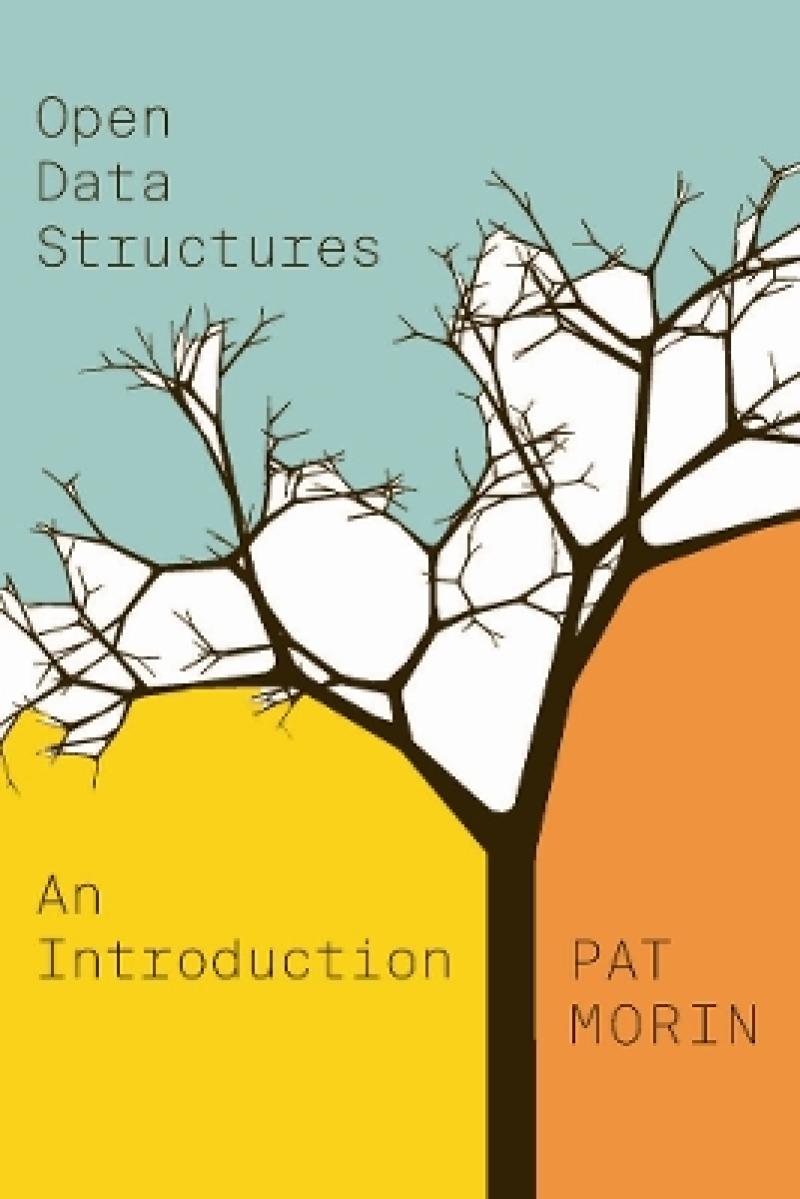Offered as an introduction to the field of data structures andalgorithms, Open Data Structures covers the implementation andanalysis of data structures for sequences (lists), queues, priorityqueues, unordered dictionaries, ordered dictionaries, and graphs.Focusing on a mathematically rigorous approach that is fast, practical,and efficient, Morin clearly and briskly presents instruction alongwith source code.
Analyzed and implemented in Java, the data structures presented inthe book include stacks, queues, deques, and lists implemented asarrays and linked-lists; space-efficient implementations of lists; skiplists; hash tables and hash codes; binary search trees includingtreaps, scapegoat trees, and red-black trees; integer searchingstructures including binary tries, x-fast tries, and y-fast tries;heaps, including implicit binary heaps and randomized meldable heaps;and graphs, including adjacency matrix and adjacency listrepresentations; and B-trees.
A modern treatment of an essential computer science topic, OpenData Structures is a measured balance between classical topics andstate-of-the art structures that will serve the needs of allundergraduate students or self-directed learners.
Acknowledgments- xi
Why This Book?- xiii
1. Introduction- 1
1.1 The Need for Efficiency- 2
1.2 Interfaces- 4
1.3 Mathematical Background- 9
1.4 The Model of Computation- 18
1.5 Correctness, Time Complexity, and Space Complexity- 19
1.6 Code Samples- 22
1.7 List of Data Structures- 22
1.8 Discussion and Exercises- 26
2. Array-Based Lists- 29
2.1 ArrayStack: Fast Stack Operations Using an Array- 30
2.2 FastArrayStack: An Optimized ArrayStack- 35
2.3 ArrayQueue: An Array-Based Queue- 36
2.4 ArrayDeque: Fast Deque Operations Using an Array- 40
2.5 DualArrayDeque: Building a Deque from Two Stacks- 43
2.6 RootishArrayStack: A Space-Efficient Array Stack- 49
2.7 Discussion and Exercises- 59
3. Linked Lists- 63
3.1 SLList: A Singly-Linked List- 63
3.2 DLList: A Doubly-Linked List- 67
3.3 SEList: A Space-Efficient Linked List- 71
3.4 Discussion and Exercises- 82
4. Skiplists- 87
4.1 The Basic Structure- 87
4.2 SkiplistSSet: An Efficient Sset- 90
4.3 SkiplistList: An Efficient Random-Access List- 93
4.4 Analysis of Skiplists- 98
4.5 Discussion and Exercises- 102
5. Hash Tables- 107
5.1 ChainedHashTable: Hashing with Chaining- 107
5.2 LinearHashTable: Linear Probing- 114
5.3 Hash Codes- 122
5.4 Discussion and Exercises- 128
6. Binary Trees- 133
6.1 BinaryTree: A Basic Binary Tree- 135
6.2 BinarySearchTree: An Unbalanced Binary Search Tree- 140
6.3 Discussion and Exercises- 147
7. Random Binary Search Trees- 153
7.1 Random Binary Search Trees- 153
7.2 Treap: A Randomized Binary Search Tree- 159
7.3 Discussion and Exercises- 168
8. Scapegoat Trees- 173
8.1 ScapegoatTree: A Binary Search Tree with Partial Rebuilding-173
8.2 Discussion and Exercises- 181
9. Red-Black Trees- 185
9.1 2-4 Trees- 186
9.2 RedBlackTree: A Simulated 2-4 Tree- 190
9.3 Summary- 205
9.4 Discussion and Exercises- 206
10. Heaps- 211
10.1 BinaryHeap: An Implicit Binary Tree- 211
10.2 MeldableHeap: A Randomized Meldable Heap- 217
10.3 Discussion and Exercises- 222
11. Sorting Algorithms- 225
11.1 Comparison-Based Sorting- 226
11.2 Counting Sort and Radix Sort- 238
11.3 Discussion and Exercises- 243
12. Graphs- 247
12.1 AdjacencyMatrix: Representing a Graph by a Matrix- 249
12.2 AdjacencyLists: A Graph as a Collection of Lists- 252
12.3 Graph Traversal- 256
12.4 Discussion and Exercises- 261
13. Data Structures for Integers- 265
13.1 BinaryTrie: A digital search tree- 266
13.2 XFastTrie: Searching in Doubly-Logarithmic Time- 272
13.3 YFastTrie: A Doubly-Logarithmic Time SSet- 275
13.4 Discussion and Exercises- 280
14. External Memory Searching- 283
14.1 The Block Store- 285
14.2 B-Trees- 285
14.3 Discussion and Exercises- 304
Bibliography- 309
Index- 317
Produktdetaljer
Om bidragsyterne
Pat Morin is Professor in the School of ComputerScience at Carleton University as well as founder and managing editorof the open access Journal of Computational Geometry. He is the authorof numerous conference papers and journal publications on the topics ofcomputational geometry, algorithms, and data structures.

